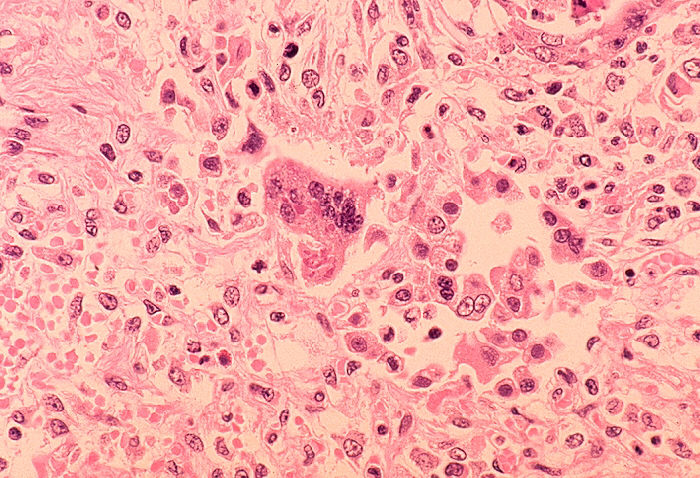Measles laboratory findings: Difference between revisions
| Line 4: | Line 4: | ||
==Overview== | ==Overview== | ||
Measles is a disease best diagnosed clinically, however | Measles is a disease best diagnosed clinically, however laboratory tests have a limited role to play especially in those conditions where the diagnosis is uncertain and certain cases of [[atypical pneumonia]]. Detecting a positive rise in measles [[IgM]] antibodies is one of the methods used for laboratory diagnosis of measles. | ||
==Laboratory Findings== | ==Laboratory Findings== | ||
Revision as of 15:48, 24 June 2014
|
Measles Microchapters |
|
Diagnosis |
|---|
|
Treatment |
|
Case Studies |
|
Measles laboratory findings On the Web |
|
American Roentgen Ray Society Images of Measles laboratory findings |
|
Risk calculators and risk factors for Measles laboratory findings |
Editor-In-Chief: C. Michael Gibson, M.S., M.D. [1]
Overview
Measles is a disease best diagnosed clinically, however laboratory tests have a limited role to play especially in those conditions where the diagnosis is uncertain and certain cases of atypical pneumonia. Detecting a positive rise in measles IgM antibodies is one of the methods used for laboratory diagnosis of measles.
Laboratory Findings
Alternatively, laboratory diagnosis of measles can be done with confirmation of positive measles IgM antibodies, reverse transcriptase polymerase chain reaction evaluation or isolation of measles virus RNA from respiratory specimens. In cases of measles infection following secondary vaccine failure IgM antibody may not be present. In these cases serological confirmation may be made by showing IgG antibody rises by Enzyme immunoasay or complement fixation. IgM antibodies are tested in a blood sample taken atleast 4-5 days after appearance of rash and persist for 30-60 days thereafter. False positives are sometimes seen. More than 4 fold rise in IgG antibodies between actue and convalescent phase sera, is also diagnostic.
Positive contact with other patients known to have measles adds strong epidemiological evidence to the diagnosis.
Some patients will develop pneumonia as a sequela to the measles. Histologically, a unique cell can be found in the paracortical region of hyperplastic lymph nodes in patients affected with this condition. This cell, known as the Warthin-Finkeldey cell, is a multinucleated giant with eosinophilic cytoplasmic and nuclear inclusions. Shown below is an image depicting histological section of lung specimen in a patient with measles associated pneumonia:
